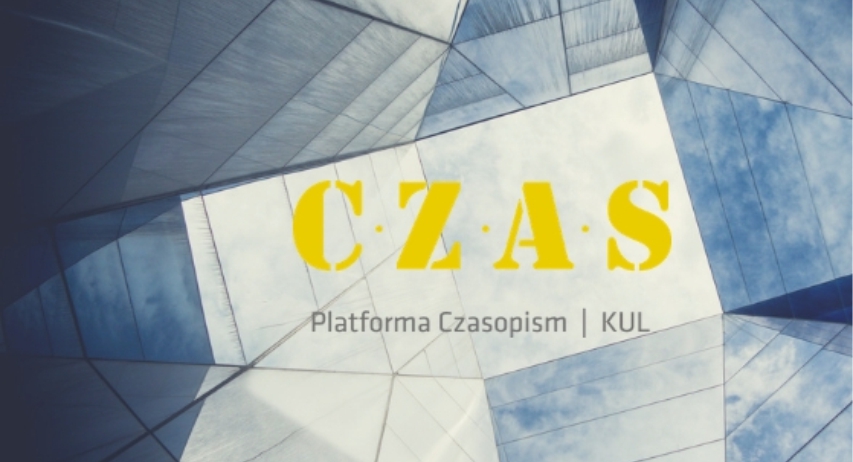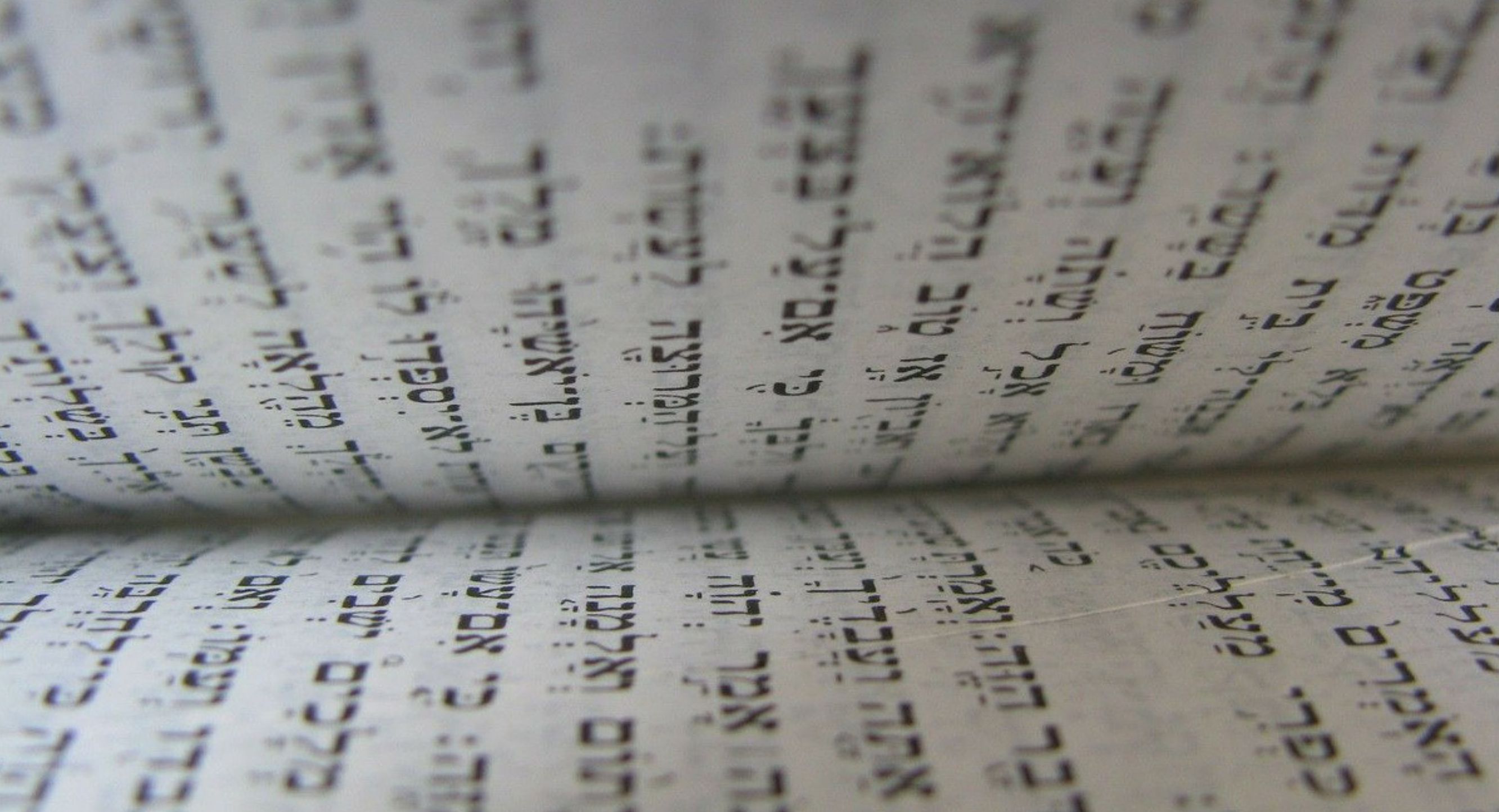The Woman’s Womb as a Place of God’s Action and Creation
Marcin Chrostowski
Pontifical Biblical Institute in Rome , Italyhttps://orcid.org/0000-0003-1974-3923
Abstract
In the Hebrew Bible, the woman’s womb is rendered by three main nouns: רֶחֶם (most often translated as “womb”), בֶּטֶן (“belly”) and מֵעֶה (plural only: מֵעִים, “bowels”). Although these terms take on various shades of meaning, they very often refer to the female womb. In this context, they always appear in relation to God, who is particularly active in this field. This article aims to show the ways of God’s creative activity in the female womb, which also takes various metaphorical shades.
Keywords:
womb, belly, bowels, רֶחֶם, בֶּטֶן, מֵעֶהReferences
Abegg, M. – Bowley, J. – Cook, E., The Dead Sea Scrolls Concordance (Leiden: Brill 2003–2015) I–II. (Crossref)
Abou-Assaf, A. – Bordreuil, P. – Millard, A.R., La statue de Tell Fekherye et son inscription bilingue assyro-araméenne (Études Assyriologiques 7; Paris: Éditions Recherches sur les Civilisations 1982). (Crossref)
Abusch, T. et al., Corpus of Mesopotamian Anti-Witchcraft Rituals (Ancient Magic and Divination 8/3; Leiden: Brill 2020). (Crossref)
Allen, L.C., Jeremiah. A Commentary (Old Testament Library; Louisville, KY: Westminster John Knox 2008).
Baker, W. – Carpenter, E. (eds.), The Complete Word Study Dictionary. Old Testament (Chattanooga, TN: AMG Publishers 2003) (= CWSD OT).
Barkay, G., “Burial Headrests as a Return to the Womb. A Reevaluation,” Biblical Archaeology Review 14/2 (1988) 48–50.
Bratcher, R.G. – Reyburn, W.D., A Translator’s Handbook on the Book of Psalms (New York: United Bible Societies 1991).
Brown, F. – Driver, S.R. – Briggs, C.A., A Hebrew and English Lexicon of the Old Testament (BDB complete) (Oxford: Oxford University Press 1952).
Clines, D.J.A., Job 1–20 (Word Biblical Commentary 17; Grand Rapids, MI: Zondervan 1989).
Clines, D.J.A. (ed.), The Dictionary of Classical Hebrew (Sheffield: Sheffield Academic Press 2011) V, VII.
Corley, J., “Wisdom and Fear of God in Ben Sira 1:11–21: Second Temple Perspectives,” Journal for the Study of the Pseudepigrapha 30/1 (2020) 46–56. (Crossref)
Craigie, P.C. – Kelley, P.H. – Drinkard Jr., J.F., Jeremiah 1–25 (Word Biblical Commentary 26; Grand Rapids, MI: Zondervan 1991).
Craigie, P.C., – Tate, M.E., Psalms 1–50, 2 ed. (Word Biblical Commentary 19; Grand Rapids, MI: Zondervan 2004).
Crenshaw, J.L., Ecclesiastes. A Commentary (Old Testament Library; Philadephia, PA: Westminster 1987).
Davidson, R., The Vitality of Worship. A Commentary on the Book of Psalms (International Theological Commentary; Grand Rapids, MI: Eerdmans 1998).
Donner, H. – Röllig, W., Kanaanäische und aramäische Inschriften, 2 ed. (Wiesbaden: Harrassowitz 1966–1969), 3 ed. (1971–1976).
Elliger, K. – Rudolph, W. (eds.), Biblia Hebraica Stuttgartensia, 5 ed. (Stuttgart: Deutsche Bibelgesellschaft 1997).
Flannery-Dailey, F., “‘Go, ask a woman’s womb’: Birth and the Maternal Body as Sources of Revelation and
Wisdom in 4 Ezra,” Journal for the Study of the Pseudepigrapha 21/3 (2012) 243–258. (Crossref)
Freedman, D.N. – Lundbom, J.R., “ בּטֶֶן ,” Theological Dictionary of the Old Testament (eds. G.J. Botterweck – H. Ringgren – H.-J. Fabry) (Grand Rapids, MI: Eerdmans 1977) II, 94–99.
Garrett, D. – House, P.R., Song of Songs. Lamentations (Word Biblical Commentary 23B; Grand Rapids, MI: Zondervan 2004).
Habel, N.C., The Book of Job. A Commentary (Old Testament Library; Philadephia, PA: Westminster 1985).
Hamilton, V.P., The Book of Genesis. Chapters 18–50 (New International Commentary on the Old Testament; Grand Rapids, MI: Eerdmans 1995).
Hamilton, V.P., “ מֵעהֶ ,” Theological Wordbook of the Old Testament (eds. R.L. Harris – G.L. Archer Jr. – B.K. Waltke) (Chicago, IL: Moody 1980) I, 518–519.
Hamilton, V.P., “ רֶחםֶ ,” New International Dictionary of Old Testament Theology and Exegesis (ed. W.A. VanGemeren) (Grand Rapids, MI: Eerdmans 1997) III, 1093–1094.
Hays, C.B., “‘My Beloved Son, Come and Rest in Me’: Job’s Return to His Mother’s Womb (Job 1:21a) in Light of Egyptian Mythology,” Vetus Testamentum 62/4 (2012) 607–621. (Crossref)
Huffmon, H.B., Amorite Personal Names in the Mari Texts (Baltimore: Johns Hopkins University Press 1965).
Hussein, M.I., “Anatomy of the Egyptian Tomb. The Egyptian Tomb as a Womb,” Discussions in Egyptology 49 (2001) 25–33.
Iricinschi, E., “‘Interroga matricem mulieris’: The Secret Life of the Womb in 4 Ezra and Sethian Cosmology,” Envisioning Judaism. Studies in Honor of Peter Schäfer on the Occasion of his 70th Birthday (eds. R. Boustan et al.) (Tübingen: Mohr Siebeck 2013) 751–770.
Jastrow, M., A Dictionary of the Targumim, the Talmud Bavli and Yerushalmi, and the Midrashic Literature (London – New York: Luzac – Putnam 1903) I.
Keel, O., “The Peculiar Headrests for the Dead in First Temple Times,” Biblical Archaeology Review 13/4 (1987) 50–53.
Klein, R.W., 1 Samuel (Word Biblical Commentary 10; Grand Rapids, MI: Zondervan 2000).
Knight, G.A.F., Servant Theology. A Commentary on the Book of Isaiah 40–55 (International Theological Commentary; Grand Rapids, MI: Eerdmans 1984).
Koehler, L. – Baumgartner, W., The Hebrew and Aramaic Lexicon of the Old Testament (Leiden: Brill 2000) III.
Kosman, A., “‘And the Spirit of God Hovered’: A Dialogic Reading of the Opening Lines of Genesis,” Nashim: A Journal of Jewish Women’s Studies & Gender Issues 33 (2018) 7–19. (Crossref)
Krause, D., “A Blessing Cursed: The Prophet’s Prayer for Barren Womb and Dry Breasts in Hosea 9,” Reading between Texts. Intertextuality and the Hebrew Bible (ed. D.N. Fewell) (Louisville, KY: Westminster John Knox 1992) 191–202.
Kronholm, T. “ רֶחםֶ ,” Theological Dictionary of the Old Testament (eds. G.J. Botterweck – H. Ringgren –
H.-J. Fabry) (Grand Rapids, MI: Eerdmans 2018) XIII, 454–459.
Lane, E.W., An Arabic-English Lexicon (London: Williams & Norgate 1863–1893, reprint 1968) I. Langton, K., “Bringing to Birth: Relationship with YHWH,” Advances in Ancient Biblical and Near Eastern Research 1/1 (2021) 65–88.
Lisowsky, G., Konkordanz zum Hebräischen Alten Testament (Stuttgart: Deutsche Bibelgesellschaft 1993) 1330.
Meyer, N.A., “Born of Woman, Fashioned from Clay: Tracking the Homology of Earth and Womb from the Hebrew Bible to the Psalms of Thanksgiving,” Dead Sea Discoveries 28 (2021) 135–178. (Crossref)
Moss, C.R. – Baden, J.S., Reconceiving Infertility. Biblical Perspectives on Procreation and Childlessness (Princeton, NJ – London: Princeton University Press 2015). (Crossref)
Nestle, E. & E. – Aland, B. & K. – Karavidopoulos, J. – Martini, C.M. – Metzger, B.M. (eds.), Novum Testamentum Graece 28 ed. (Stuttgart: Deutsche Bibelgesellschaft 2012).
Newman, B.M. – Stine, P.C., A Translator’s Handbook on the Book of Jeremiah (New York: United Bible Societies 2003).
Ogden, G.S. – Sterk, J., A Translator’s Handbook on the Book of Isaiah (New York: United Bible Societies 2011).
Oswalt, J.N., “ בּטֶֶן ,” Theological Wordbook of the Old Testament (eds. R.L. Harris – G.L. Archer Jr. – B.K. Waltke) (Chicago, IL: Moody 1980) I, 102–103.
Oswalt, J.N., The Book of Isaiah. Chapters 40–66 (New International Commentary on the Old Testament; Grand Rapids, MI: Eerdmans 1998).
Petrakis, V., “‘The Beginning of Wisdom is to Fear the Lord, And She was Joined with the Faithful in the Womb.’ WSir 1:12 The Theology of Children, An Insight from the Old and the New Testaments,” Love, Marriage and Family in Eastern Orthodox Perspective (eds. T.G. Dedon – S. Trostyanskiy) (Gorgias Eastern Christian Studies 44; Piscataway, NJ: Gorgias 2016) 295–302. (Crossref)
Pike, D.M., “Formed in and Called from the Womb,” To Seek the Law of the Lord. Essays in Honor of John W. Welch (eds. P.Y. Hoskisson – D.C. Peterson) (Orem, UT: Interpreter Foundation 2017) 317–331.
Pontificia Commissione Biblica, “Che cosa l’uomo?” (Sal 8,5). Un itinerario di antropologia biblica (Città del Vaticano: Libreria Editrice Vaticana 2019). Polish trans. H. Witczyk: Papieska Komisja Biblijna, “Czym jest człowiek?” (Ps 8,5). Zarys antropologii biblijnej (Kielce: Jedność 2020).
Rahlfs, A. (ed.), Septuaginta. Id est Vetus Testamentum graece iuxta LXX interpretes edidit Alfred Rahlfs. Editio altera, quam recognovit et emendavit Robert Hanhart. Duo volumina in uno (Stuttgart: Deutsche Bibelgesellschaft 2006).
Reyburn, W.D. – Fry, E.McG., A Translator’s Handbook on the Book of Genesis (New York: United Bible Societies 1997).
Rogers Jr., C.L., “ בּטֶֶן ,” New International Dictionary of Old Testament Theology and Exegesis (ed. W.A. VanGemeren) (Grand Rapids, MI: Eerdmans 1997) I, 639–641.
Rogers Jr., C.L., “ גָּחוֹן ,” New International Dictionary of Old Testament Theology and Exegesis (ed. W.A. VanGemeren) (Grand Rapids, MI: Eerdmans 1997) I, 835.
Schmuttermayr, G., “RHM – Eine lexikalische Studie,” Biblica 51 (1970) 499–532.
Simian-Yofre, H., “ רחם ,” Theological Dictionary of the Old Testament (eds. G.J. Botterweck – H. Ringgren – H.-J. Fabry) (Grand Rapids, MI: Eerdmans 2018) XIII, 437–452.
Sokoloff, M., A Dictionary of Jewish Palestinian Aramaic of the Byzantine Period (Dictionaries of Talmud, Midrash and Targum 2; Ramat-Gan: Bar Ilan University Press 1990).
Sokoloff, M., A Syriac Lexicon. Translation from the Latin, Correction, Expansion, and Update of C. Brockelmann’s Lexicon Syriacum (Winona Lake, IN – Piscataway, NJ: Eisenbrauns – Gorgias 2009).
Tal, A., A Dictionary of Samaritan Aramaic (Leiden – Boston, MA – Köln: Brill 2000). (Crossref)
Thompson, J.A., The Book of Jeremiah (New International Commentary on the Old Testament; Grand Rapids, MI: Eerdmans 1980).
Vall, G., “‘From Whose Womb Did the Ice Come Forth?’ Procreation Images in Job 38:28–29,” Catholic Biblical Quarterly 57/3 (1995) 504–513.
Van der Zwan, P., “Bedeutungen und Bilder der Gebärmutter in der Hebräischen Bibel,” Journal for Semitics 24/1 (2015) 169–197. (Crossref)
von Rad, G., Genesis. A Commentary, Revised ed. (Old Testament Library; Philadephia, PA: Westminster 1972).
van der Watt, L., The Reception of the Grace Formula in Old and New Testament Theologies. A Hermeneutical and Theological Study (Diss. Stellenbosch University; Stellenbosch 2020) https://scholar.sun.ac.za/handle/10019.1/109121 [access: 11.01.2022].
Watts, J.D.W., Isaiah 34–66, Revised ed. (Word Biblical Commentary 25; Grand Rapids, MI: Zondervan 2005).
Węgrzyniak, W., “Starotestamentowe życie nienarodzonych,” Polonia Sacra 17/1 (2013) 17–34. (Crossref)
Ziffer, I., “Moon, Rain, Womb, Mercy. The Imagery of The Shrine Model from Tell el-Far’ah North – Biblical
Tirzah. For Othmar Keel,” Archaeology and Ancient Israelite Religion (ed. A. Faust) (Basel et al.: MDPI 2020) 133–156.
Pontifical Biblical Institute in Rome https://orcid.org/0000-0003-1974-3923
License

This work is licensed under a Creative Commons Attribution 4.0 International License.
- Pursuant to the Act on Copyright and Related Rights of February 4, 1994, the Author of the publication grants to the Publisher of the journal „The Biblical Annals” e a non-exclusive and royalty-free license to use the Work submitted for publication, without time and territorial restrictions in the following fields of use:
a) record the Work and copy it by means of any technique (including printing and electronic recording) on all known data carriers (including IT, electronic and polygraphic), and in all IT systems (in particular those available online);
b) enter the Work into computer memory, disseminate the Work and its copies, as well as market the Work and its copies;
c) publicly perform, replay, display and screen the Work, as well as lend, rent and lease the Work and its copies;
d) make available, market and disseminate the Work and its copies via IT networks, and in particular via the Internet, including the promotion or advertising of the Work, the journal or the Publisher. - The Author shall further grant his/her consent for the Publisher to use and dispose of derivative works.
- The Publisher may sublicense the work.
- Third parties may use the articles and other materials containing the Works, or developed on the basis of the Works in line with the model Creative Commons Attribution 4.0 International (also referred to as CC BY 4.0).







